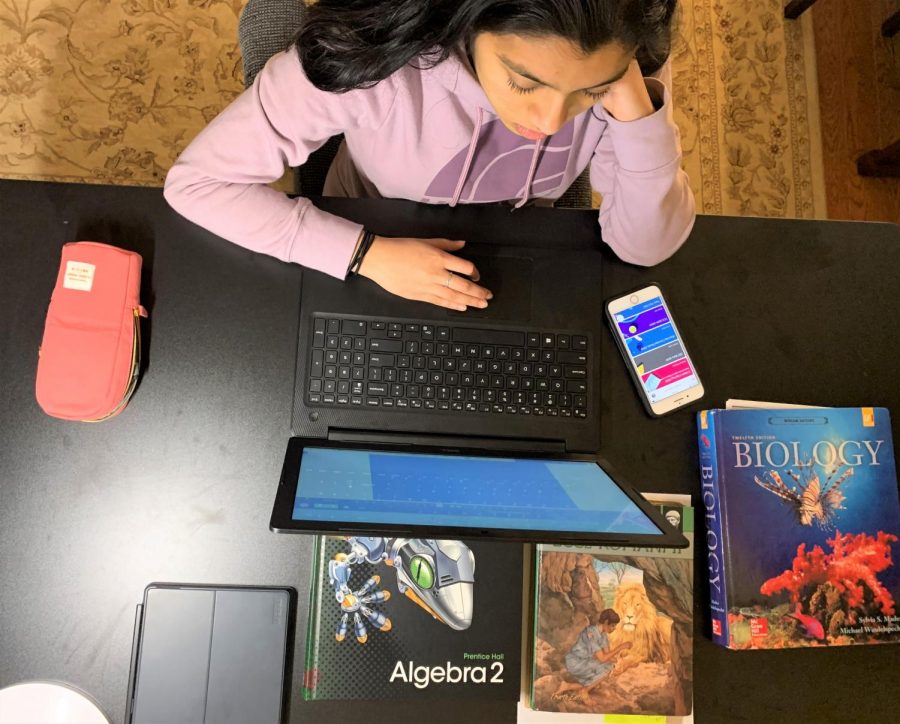Distance Learning Encourages Unhealthy Amounts of Screentime
Distance learning has both asynchronous and synchronous parts. Both involve the use of screens to aid students. Since students are forced to spend additional time on screens, it can lead to unhealthy screen time habits and their consequences.
May 14, 2020
With social distancing guidelines in place to help decrease the spread of the COVID-19 pandemic, school is cancelled for the rest of the year. Students have asynchronous work, all of which is entirely optional and can only boost a student’s grades. So why does it seem so long?
Online classes require a student to spend around three hours on days with classes on a screen, excluding any asynchronous work students do. All asynchronous work is submitted online, meaning that assignments once done on paper are now generally done online as well. Social distancing also means that the only way to stay in contact with friends is on social media. In addition, students will usually entertain themselves, listen to music, go on social media, or play a few games.
In a study published in the Psychiatric Quarterly, screen time in itself has been shown not to have detrimental effects until it reaches around six hours of use daily, but it can strain eyes and even be deceptively energy – consuming. Online classes can also often seem much longer than an actual class. While online classes might be the best option right now, we can certainly optimize online learning.
Online classes currently run on Tuesdays and Thursdays, with a 30 minute gap between classes. A student has each class for 45 minutes, once a week. Office hours are on Wednesdays, Fridays, and occasionally during the lunch health and wellness break.
Students are likely to spend the gap between classes on their computers, so cutting down the break to 10 minutes like a normal school day would help reduce screen time, allow students and teachers to wake up later, and save around 40 minutes. Cutting down lunch breaks to an hour would also help students and teachers have less fatigue. This would optimize the class days.
Asynchronous learning can be optimized by teachers creating more hands-on assignments as a replacement for typed or traditional assignments. Resources, such as chemicals for labs, may be difficult to get, so it would be good to have an option with household ingredients. Assignments that incorporate art or music would also be interesting for teachers and students to experiment with. This would help optimize students’ time.
Online classes significantly increase the amount of screentime people have in a day. This can cause eye strain and even fatigue, but it is the best option given the circumstances. However, students and teachers can work together to optimize online classes, saving everyone both time and energy.






